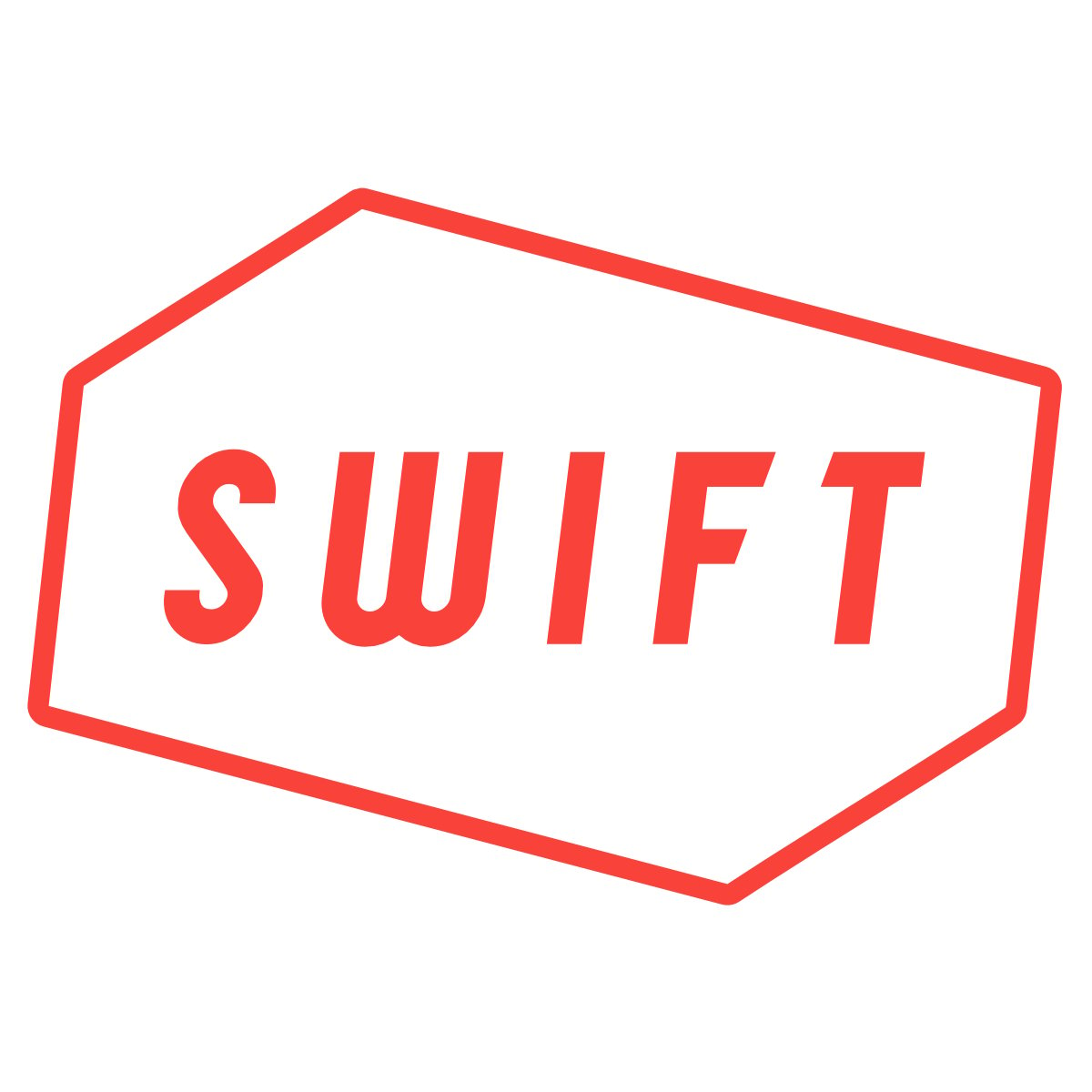CLASS OF 2023
SS
RHP
Austin
Grube
Wisconsin-Parkside
Chilton (HS) • WI
6' 1" • 200LBS
R/R • 19yr 8mo
Travel Team: ISA
Chilton (HS) • WI
6' 1" • 200LBS
R/R • 19yr 8mo
Travel Team: ISA
Rankings
2023 National
Rankings available to Premium Subscriber
2023 State
Rankings available to Premium Subscriber
Commitment
Best Of Stats
25.1
Hand Speed (max)
2/27/22
72.2
Bat Speed (max)
2/27/22
11.2
Rot. Acc (max)
8/16/21
-
Hard Hit %
87.7
Exit Velocity (max)
2/27/22
78.2
Exit Velocity (avg)
2/27/22
320
Distance (max)
2/27/22
88
Sweet Spot %
8/16/21
7.45
60
2/27/22
-
30-yd
-
10-yd
-
Run speed (max)
82
INF Velo
2/27/22
-
OF Velo
-
C Velo
-
Pop Time
Fastball
86
Velocity (max)
7/21/22
83.2 - 84.4
Velo Range
2/27/22
2241
Spin Rate (avg)
8/16/21
Changeup
75.4 - 77
Velo Range
2/27/22
1677
Spin Rate (avg)
8/16/21
Curveball
71.1 - 73
Velo Range
2/27/22
2376
Spin Rate (avg)
8/16/21
Positional Tools
2022
2021
60 Yard Dash
The athlete's fastest 60-yard dash time in the given event year. Measured in seconds (s)
7.45
Infield Velocity
The athlete's maximum throwing velocity from an infield position in the given event year. Measured in miles per hour (MPH).
82.0
Power / Speed Score
A simple calculation that divides the athlete’s Exit Velocity Max by the athlete’s 60 Yard Dash time for the given event year. For example, 98 MPH / 7.00s = 14.00.
11.8
60 Yard Dash
The athlete's fastest 60-yard dash time in the given event year. Measured in seconds (s)
7.52
Infield Velocity
The athlete's maximum throwing velocity from an infield position in the given event year. Measured in miles per hour (MPH).
77.0
Power / Speed Score
A simple calculation that divides the athlete’s Exit Velocity Max by the athlete’s 60 Yard Dash time for the given event year. For example, 98 MPH / 7.00s = 14.00.
11.2
Hitting

2022
2021
Exit Velocity Max
The highest exit velocity of any batted ball in the given event year. Measured in miles per hour (MPH).
87.7
Exit Velocity Avg
Average exit velocity of all batted balls in the given event year. Measured in miles per hour (MPH).
78.2
Distance Max
The highest flight distance of any batted ball in the given event year. Measured in feet (ft).
320
Distance Avg
Average flight distance of all batted balls in the given event year. Measured in feet (ft).
217
Launch Angle Avg
Average launch angle of all batted balls in the given event year. Measured in degrees.
22.1
Hard Hit %
Percentage of batted balls with exit velocities over 95 MPH in the given event year.
Sweet Spot %
Percentage of batted balls in the given event year with a launch angle between 8° and 32°.
Line Drive %
Percentage of batted balls with launch angles between 10 and 25 degrees in the given event year.
Fly Ball %
Percentage of batted balls with launch angles between 25 and 50 degrees in the given event year.
Ground Ball %
Percentage of batted balls with launch angles below 10 degrees in the given event year.
Exit Velocity Max
The highest exit velocity of any batted ball in the given event year. Measured in miles per hour (MPH).
84.5
Exit Velocity Avg
Average exit velocity of all batted balls in the given event year. Measured in miles per hour (MPH).
78.1
Distance Max
The highest flight distance of any batted ball in the given event year. Measured in feet (ft).
316
Distance Avg
Average flight distance of all batted balls in the given event year. Measured in feet (ft).
249
Launch Angle Avg
Average launch angle of all batted balls in the given event year. Measured in degrees.
28.5
Hard Hit %
Percentage of batted balls with exit velocities over 95 MPH in the given event year.
Sweet Spot %
Percentage of batted balls in the given event year with a launch angle between 8° and 32°.
Line Drive %
Percentage of batted balls with launch angles between 10 and 25 degrees in the given event year.
Fly Ball %
Percentage of batted balls with launch angles between 25 and 50 degrees in the given event year.
Ground Ball %
Percentage of batted balls with launch angles below 10 degrees in the given event year.
Green Bay Preseason ID
Feb 27, 2022
Trackman - Hitting
87.7
Exit Velocity (max)
78.2
Exit Velocity (avg)
217
Distance (avg)
320
Distance (max)
Sweet Spot %
Line Drive %
Fly Ball %
Ground Ball %
Eastern Wisconsin Open
Aug 16, 2021
Trackman - Hitting
84.5
Exit Velocity (max)
78.1
Exit Velocity (avg)
249
Distance (avg)
316
Distance (max)
Sweet Spot %
Line Drive %
Fly Ball %
Hitting

2022
2021
Hand Speed Max
The highest Peak Hand Speed of any swing in the given event year.
25.1
Hand Speed Avg
The average Peak Hand Speed for all swings in the given event year.
23.6
Bat Speed Max
The highest Bat Speed of any swing in the given event year.
72.2
Bat Speed Avg
The average Bat Speed for all swings in the given event year.
69.5
Rotational Acceleration Max
The highest Rotational Acceleration of any swing in the given event year.
Rotational Acceleration Avg
The average Rotational Acceleration for all swings in the given event year.
On-Plane Efficiency Max
The highest On-Plane Efficiency of any swing in the given event year.
On-Plane Efficiency Avg
The average On-Plane Efficiency for all swings in the given event year.
Hand Speed Max
The highest Peak Hand Speed of any swing in the given event year.
22.1
Hand Speed Avg
The average Peak Hand Speed for all swings in the given event year.
20.9
Bat Speed Max
The highest Bat Speed of any swing in the given event year.
63.8
Bat Speed Avg
The average Bat Speed for all swings in the given event year.
60.5
Rotational Acceleration Max
The highest Rotational Acceleration of any swing in the given event year.
Rotational Acceleration Avg
The average Rotational Acceleration for all swings in the given event year.
On-Plane Efficiency Max
The highest On-Plane Efficiency of any swing in the given event year.
On-Plane Efficiency Avg
The average On-Plane Efficiency for all swings in the given event year.
Green Bay Preseason ID
Feb 27, 2022
Blast - Hitting
25.1
Hand Speed (max)
23.6
Hand Speed (avg)
72.2
Bat Speed (max)
69.5
Bat Speed (avg)
Rot. Acc (max)
Rot. Acc (avg)
On Plane Eff (avg)
MaxOnPlaneEfficiency
Eastern Wisconsin Open
Aug 16, 2021
Blast - Hitting
22.1
Hand Speed (max)
20.9
Hand Speed (avg)
63.8
Bat Speed (max)
60.5
Bat Speed (avg)
Rot. Acc (max)
Rot. Acc (avg)
On Plane Eff (avg)
MaxOnPlaneEfficiency
Pitching

2022
2021
Fastball
Velocity Max
The maximum observed fastball velocity in the given event year. Measured in miles per hour (MPH).
84.5
Fastball
Velocity Avg
The average velocity for all pitches of this type in the given event year. Measured in miles per hour (MPH).
83.8
Fastball
Spin Rate Avg
The average rate of spin for all pitches of this type in the given event year. Measured in rotations per minute (RPM).
1704
Fastball
Spin Score Avg
The average Bauer Units value of all fastballs in the given event year. Bauer Units are calculated for each pitch by dividing Spin Rate by Velocity.
20.3
Fastball
Total Movement Avg
The average total non-gravity movement for all pitches of this type in the given event year. Measured in inches (in).
Curveball
Velocity Avg
The average velocity for all pitches of this type in the given event year. Measured in miles per hour (MPH).
72.1
Curveball
Spin Rate Avg
The average rate of spin for all pitches of this type in the given event year. Measured in rotations per minute (RPM).
1927
Curveball
Total Movement Avg
The average total non-gravity movement for all pitches of this type in the given event year. Measured in inches (in).
Changeup
Velocity Avg
The average velocity for all pitches of this type in the given event year. Measured in miles per hour (MPH).
76.2
Changeup
Spin Rate Avg
The average rate of spin for all pitches of this type in the given event year. Measured in rotations per minute (RPM).
1347
Changeup
Total Movement Avg
The average total non-gravity movement for all pitches of this type in the given event year. Measured in inches (in).
Fastball
Velocity Max
The maximum observed fastball velocity in the given event year. Measured in miles per hour (MPH).
80.9
Fastball
Velocity Avg
The average velocity for all pitches of this type in the given event year. Measured in miles per hour (MPH).
79.2
Fastball
Spin Rate Avg
The average rate of spin for all pitches of this type in the given event year. Measured in rotations per minute (RPM).
2241
Fastball
Spin Score Avg
The average Bauer Units value of all fastballs in the given event year. Bauer Units are calculated for each pitch by dividing Spin Rate by Velocity.
28.3
Fastball
Total Movement Avg
The average total non-gravity movement for all pitches of this type in the given event year. Measured in inches (in).
Curveball
Velocity Avg
The average velocity for all pitches of this type in the given event year. Measured in miles per hour (MPH).
69.6
Curveball
Spin Rate Avg
The average rate of spin for all pitches of this type in the given event year. Measured in rotations per minute (RPM).
2376
Curveball
Total Movement Avg
The average total non-gravity movement for all pitches of this type in the given event year. Measured in inches (in).
Changeup
Velocity Avg
The average velocity for all pitches of this type in the given event year. Measured in miles per hour (MPH).
71.7
Changeup
Spin Rate Avg
The average rate of spin for all pitches of this type in the given event year. Measured in rotations per minute (RPM).
1677
Changeup
Total Movement Avg
The average total non-gravity movement for all pitches of this type in the given event year. Measured in inches (in).
Green Bay Preseason ID
Feb 27, 2022
Trackman - Fastball
84.5
Velocity (max)
83.2 - 84.4
Velo Range
84.7
Eff Velocity (avg)
1,801
Spin Rate (max)
1,704
Spin Rate (avg)
IVB (max)
IVB (avg)
HM (max)
HM (avg)
Extension (avg)
Release Ht (avg)
Spin Score (max)
Zone %
Trackman - Curveball
73.5
Velocity (max)
71.1 - 73.0
Velo Range
73.1
Eff Velocity (avg)
2,066
Spin Rate (max)
1,927
Spin Rate (avg)
IVB (max)
IVB (avg)
HM (max)
HM (avg)
Extension (avg)
Release Ht (avg)
Spin Score (max)
Trackman - ChangeUp
77.1
Velocity (max)
75.4 - 77.0
Velo Range
78.0
Eff Velocity (avg)
1,387
Spin Rate (max)
1,347
Spin Rate (avg)
IVB (max)
IVB (avg)
HM (max)
HM (avg)
Extension (avg)
Release Ht (avg)
Spin Score (max)
Zone %
Eastern Wisconsin Open
Aug 16, 2021
Trackman - Fastball
80.9
Velocity (max)
78.0 - 80.4
Velo Range
78.8
Eff Velocity (avg)
2,325
Spin Rate (max)
2,241
Spin Rate (avg)
IVB (max)
IVB (avg)
HM (max)
HM (avg)
Extension (avg)
Release Ht (avg)
Spin Score (max)
Zone %
Trackman - Curveball
69.9
Velocity (max)
69.1 - 69.9
Velo Range
68.0
Eff Velocity (avg)
2,479
Spin Rate (max)
2,376
Spin Rate (avg)
IVB (max)
IVB (avg)
HM (max)
HM (avg)
Extension (avg)
Release Ht (avg)
Spin Score (max)
Zone %
Trackman - ChangeUp
72.6
Velocity (max)
71.0 - 72.4
Velo Range
71.4
Eff Velocity (avg)
1,791
Spin Rate (max)
1,677
Spin Rate (avg)
IVB (max)
IVB (avg)
HM (max)
HM (avg)
Extension (avg)
Release Ht (avg)
Spin Score (max)
Zone %
Pitch Scores
2021
Fastball
Hop+
A fastball with hop has a flat approach angle and visually jumps through the zone. When thrown up in the zone, it is more likely to generate a higher swing and miss average. Hop+ of 100 is MLB average.
Fastball
Sink+
A fastball with sink has low backspin and drops through the strike zone. When thrown down in the zone, it is more likely to generate a higher ground ball percentage and lower launch angle. Sink+ of 100 is MLB average.
Fastball
Rise+
A fastball with rise has a high percentage of backspin. When thrown up in the zone, it is more likely to generate a higher fly ball percentage. Rise+ of 100 is MLB average
Curveball
Hammer+
A hammer breaking ball drops vertically with velocity through the zone, or 12-to-6 movement. Hammer+ of 100 is MLB average.
Curveball
Sweep+
A sweeping breaking ball moves horizontally with velocity through the zone. Sweep+ of 100 is MLB average.
Pitching Velos
2022
2021
Fastball
Velocity Max
The maximum observed fastball velocity in the given event year. Measured in miles per hour (MPH).
85.0
Fastball
Velocity Avg
The average velocity for all pitches of this type in the given event year. Measured in miles per hour (MPH)
83.5
Curveball
Velocity Avg
The average velocity for all pitches of this type in the given event year. Measured in miles per hour (MPH)
72.0
Changeup
Velocity Avg
The average velocity for all pitches of this type in the given event year. Measured in miles per hour (MPH)
76.0
Fastball
Velocity Max
The maximum observed fastball velocity in the given event year. Measured in miles per hour (MPH).
81.0
Fastball
Velocity Avg
The average velocity for all pitches of this type in the given event year. Measured in miles per hour (MPH)
79.0
Curveball
Velocity Avg
The average velocity for all pitches of this type in the given event year. Measured in miles per hour (MPH)
69.5
Changeup
Velocity Avg
The average velocity for all pitches of this type in the given event year. Measured in miles per hour (MPH)
71.5
Game Performance

Visual Edge

2022
Edge Score
The highest Edge Score within the given year. Edge Score is a comprehensive score that takes the core-six visual skills into account, providing an assessment of an athlete’s overall visual ability.
74.53
Pitch Ai

2022
Arm Speed
The maximum speed, in the direction of home plate, that the wrist is traveling. Measured in meters per second (m/s)
Arm Slot
Angle of the forearm relative to the ground between maximum external rotation (MER) and ball release (BR). Which can be a powerful player comparison metric, delivered in degrees.
Knee Extension Velo
The angular velocity of the front knee straightening after foot plant, which provides indicators of velocity potential. Measured in degrees per second.
Deception
The amount of time that the ball is visible to the hitter, after the instant of front foot strike. Measures in milliseconds.
Hip-Shoulder Separation
The difference in angle of between the hips and shoulders, occurring close to the foot plant. Measured in degrees.
Green Bay Preseason ID
Feb 27, 2022
ProPlayAI - Foot Plant
Elbow Flexion (avg)
Shoulder Abduction (avg)
Hip Shoulder Seperation (avg)
ProPlayAI - MER
External Rotation (avg)
Stride Length (avg)
ProPlayAI - Release
Arm Speed (max)
Arm Speed (avg)
Knee Extension Velocity (max)
Knee Extension Velocity (avg)
Knee Flexion (avg)
Arm Slot (avg)
Lateral Trunk Tilt (avg)
Arm Path (avg)
Deception (avg)
Torque (avg)
Efficiency (avg)
Sequencing (avg)
Notes
News
Comments
Draft Reports
Contact
Premium Content Area
To unlock contact information, you need to purchase a ScoutPLUS subscription.
Purchase Subscription OR
Login





 Sign in to view rankings
Sign in to view rankings 
Grube is a wiry 6-foot-1, 175-pound right-hander with an upside frame that projects. Grube took the mound after working out as an infielder and quickly caught our attention, pumping his fastball at 83-85 mph with above-average arm speed to pair. His best secondary offering in this look was his breaking ball; a pitch that played at 71-74 mph and spun off a 10/4 plane with sweep across the zone. Grube also showed well as a position player. Driving balls to all fields while keeping his barrel working on path through impact. On defense, he showed sufficient actions and glovework while throwing with carry.
Positional Profile: SS/RHP
Body: 6-1, 175-pounds. Athletic proportions. Compact strength.
Hit: RHH. Tall setup with big sheffield rhythm. Short stride. Vertical tip and path. Tight turn with barrel depth. All fields keeping the barrel working on path through impact.
Power: 87.7 max exit velocity, averaged 78.2 mph. 319’ max distance.
Arm: RH. INF - 82 mph. Loose 3/4 action with carry and some arm strength.
Defense: Works from right to left from outside the ball. Stiff glove.
Run: 7.45 runner in the 60.
Delivery: Athletic drop/type downhill pattern, fluid lower half, controlled to footstrike and stays in line.
Arm Action: RH. Long and loose arm action that finishes from a high 3/4 slot.
FB: T84.5, 83.2-84.4 mph. Cuts it some, some feel for the zone. T1800, 1704 average rpm.
CB: 71.1-73.0 mph. Lowers slot, slurve-type spin off a 10/4 plane. T2066, 1927 average rpm.
CH: 75.4-77.0 mph. Maintains arm speed, slightly lowers slot to fastball, played on the arm-side of the plate. T1386, 1347 average rpm.